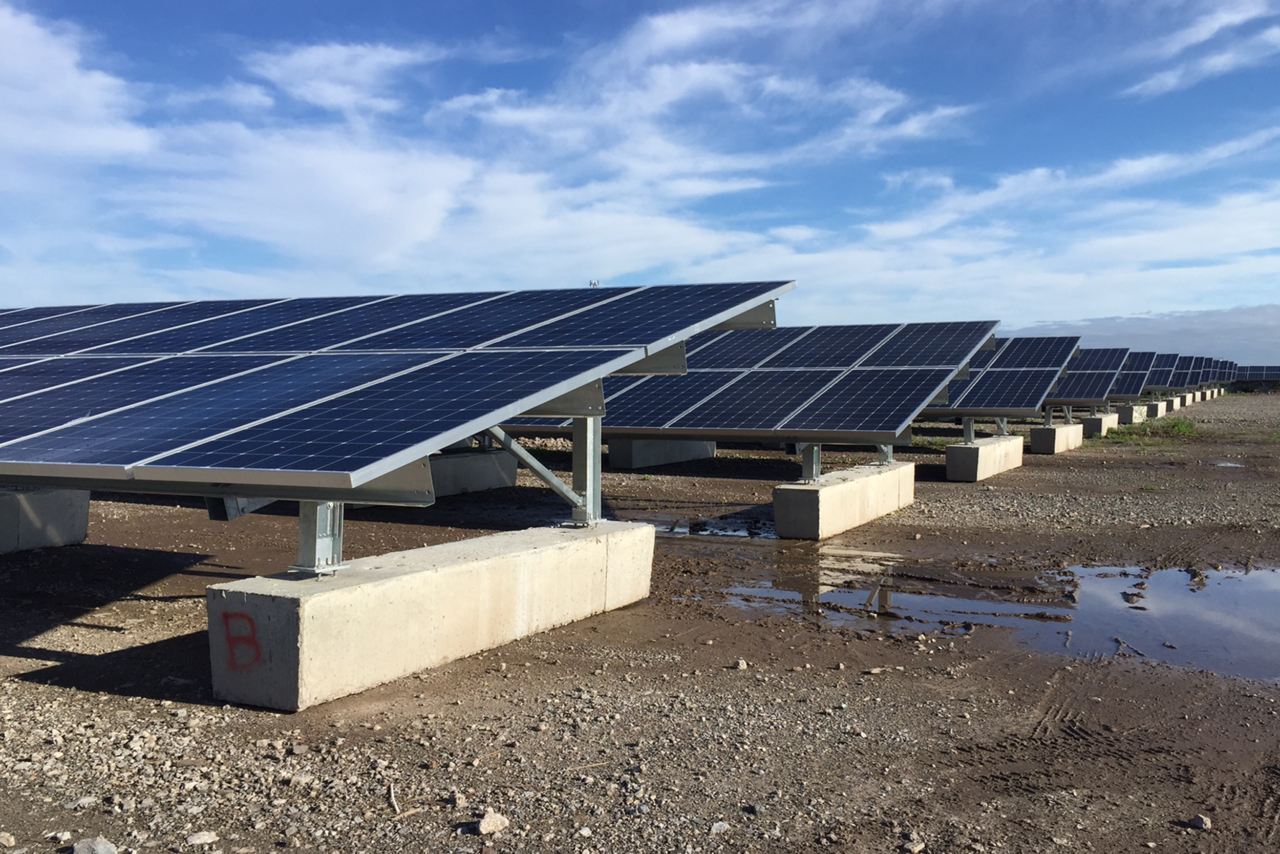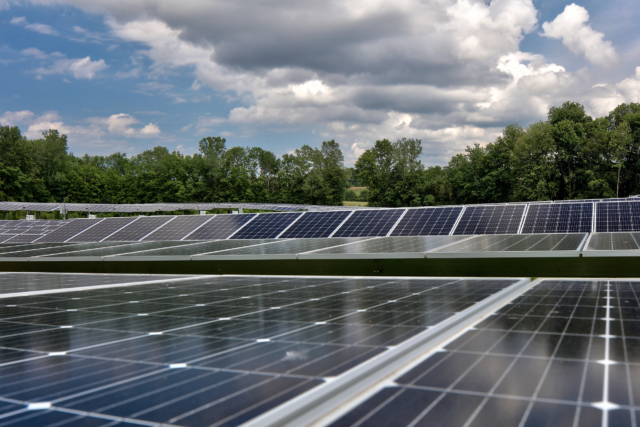Is your local landfill a potential site for solar development?
The thought of a landfill occupying valuable land in your community is less than thrilling, but could these eye sores serve a greater purpose?
In order to understand how landfills could possibly benefit your community, it’s important to understand how landfills work – especially closed sites that are no longer accepting waste materials. The waste disposed of in municipal landfills includes household trash, commercial waste, and construction and demolition waste. Most landfills are not designed to accelerate the breakdown of waste. Instead, as prescribed by Federal regulations, landfills are designed to store waste. In simple terms, a modern landfill is similar to a Tupperware container, lined with plastic on the bottom and capped with plastic on top with waste stored inside. Therefore, natural decomposition of garbage in a municipal landfill is a slow process. As the waste decomposes, methane gas is produced. Methane is a flammable gas and is dangerous if allowed to collect underground.
Most municipal landfills are deemed “at capacity” when they reach their allowable vertical height. Once at capacity, the landfill is capped to form a barrier between the waste materials and the surface, shielding humans, wildlife, and the environment from possible harmful effects. At this point, the landfill sits unusable during its 30-year post-closure period required by regulations. However, using the closed landfill as a solar farm is one potential viable, post-closure option.
Not all landfills are created equal, and different challenges can arise for each project; this is especially true for solar landfill projects. Building solar farms on closed landfills can be considered large-scale projects and require extensive review from stakeholders. In some instances, local policies get in the way of building solar farms on landfills. Such policies include codes and permits, as well as zoning ordinances. Occasionally, local government needs to develop policies, including provisions for handling property taxes, for the solar farms before they can even consider construction of the solar farms. This type of policy development can take years. (Note that closed landfill solar projects in NY are exempt from SEQRA).
In recent years, however, solar on landfills has been a popular topic amongst upstate communities. At LaBella, we believe that solar panels are certainly something that should be considered as part of an overall post-closure and master plan of your facility. New York State currently has a good portfolio for renewable energy credits, and if the federal government reverts to continuing to provide federal tax credits for solar development, the number of solar projects on landfills could double.
According to the United States Environmental Protection Agency (US EPA), there are about 10,000 old municipal landfills across the United States, many of which are candidate sites for solar energy farms. Most of these landfills are located on the outskirts of cities, and more often than not they are in close proximity to power lines, thus providing a slight development advantage and making projects of this type accessible.
Given all the background and challenges associated with solar on landfills, could installing panels on your municipal landfill be a good fit for your community? Our team is prepared to help you evaluate this option. Some items you may want to consider include the following:
- Siting a solar farm on a landfill can eliminate one hurdle to developing solar farms. Landfills provide a large space for utility-grid solar farms that is largely out of sight.
- Many landfills are in close proximity to power lines and roads. Therefore, there is a potential means for economically interconnecting solar power to the utility grid.
- Leasing of landfill space has been found to be attractive to both landfill owners and solar project developers. Landfill square footage is typically offered at a lower cost than green field properties, which makes large-scale projects more economically feasible for the developer. Simultaneously, leasing the property provides the landfill owner with a source of revenue to perform post-closure care activities.
- Developing landfills for solar energy generation makes unusable land more useful at a location that has historically been accepted by local residents as an environmentally sensitive location.
As you may know, New York’s Governor has an aggressive goal that at least 50% of the State’s power should be generated via renewable sources by 2030. LaBella is using its expertise to help clients reach this goal. We have substantial experience working with state and federal agencies, developers, and communities on all facets of renewable energy landfill projects.
LaBella’s Waste & Recycling team has decades of experience in landfill management, closure, and post-closure monitoring. We’re excited about the opportunity to combine our renewable energy and landfill experience on projects that put these sites to use for their communities.
For a look at one such project, see the Emerson Street Solar on Landfill case study below.

